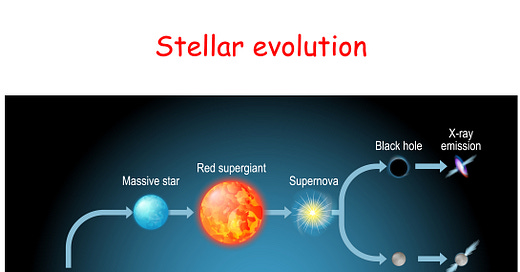Not one, but two massive black holes are eating away at this galaxy
Astronomers searching for massive black holes shredding stars found one in an unusual place -- 2,600 light years from the core of a galaxy. The roque black hole may be from an earlier merger with another galaxy, or have been tossed out of the core after interacting with two other black holes. This is the first ever optically discovered off-nuclear tidal disruption event. Eventually, the two could merge and produce ripples of gravitational waves.
Love what you’re reading?
We’re growing fast and it’s all thanks to readers like you!
Our mission is simple: make the latest research news free and accessible to everyone. We don’t charge fees, and we never will.
If you believe in keeping knowledge open to all, you can support us with a donation:
Every contribution helps us stay free and independent. Thank you for being part of the ScienceDaily community!
Astronomers observe largest ever sample of galaxies up to over 12 billion light years away
The largest sample of galaxy groups ever detected has been presented by a team of international astronomers using data from the James Webb Space telescope (JWST) in an area of the sky called COSMOS Web. The study marks a major milestone in extragalactic astronomy, providing unprecedented insights into the formation and evolution of galaxies and the large-scale structure of the universe.
Streaked slopes on Mars probably not signs of water flow, study finds
Researchers analyzed a global database of 500,000 strange streaks that occur on steep Martian slopes, concluding that they're most likely caused by dry processes rather than liquid flow.
Glaciers will take centuries to recover even if global warming is reversed, scientists warn
New research reveals mountain glaciers across the globe will not recover for centuries -- even if human intervention cools the planet back to the 1.5 C limit, having exceeded it.
Nimble dimples: Agile underwater vehicles inspired by golf balls
Underwater or aerial vehicles with dimples like golf balls could be more efficient and maneuverable, a new prototype has demonstrated.
A team was able to show that swimming movements are possible even without a central control unit. This not only explains the behavior of microorganisms, it could also enable nanobots to move in a targeted manner, for example to transport drugs to the right place in the body.
Could nanoplastics in the environment turn E. coli into a bigger villain?
Nanoplastics are everywhere. These fragments are so tiny they can accumulate on bacteria and be taken up by plant roots; they're in our food, our water, and our bodies. Scientists don't know the full extent of their impacts on our health, but new research suggests certain nanoplastics may make foodborne pathogens more virulent.
Capuchin monkeys develop bizarre 'fad' of abducting baby howlers
Animal abduction: Biologists documented five male capuchin monkeys carrying at least eleven different infant howler monkeys -- a behavior never before seen in wild primates. Rise and spread: The sightings were remotely recorded by over 85 camera traps, which allowed scientists to pinpoint the origin and subsequent spread of this social tradition over a 15-month period.
Mice use chemical cues such as odors to sense social hierarchy
Researchers have shown that mice use chemical cues, including odors, to detect the social rank of an unfamiliar mouse and compare it to their own, using this information to determine their behavior.
Experimental painkiller could outsmart opioids -- without the high
A study shows a non-opioid pain reliever blocks pain at its source -- calming specific nerve signals that send pain messages to the brain. In mice, the compound SBI-810 eased pain from surgery, bone fractures, and nerve injury without causing sedation or constipation.
If you've ever watched a flock of birds move in perfect unison or seen ripples travel across a pond, you've witnessed nature's remarkable ability to coordinate motion. Recently, a team of scientists and engineers has discovered a similar phenomenon on a microscopic scale, where tiny magnetic particles driven by rotating fields spontaneously move along the edges of clusters driven by invisible 'edge currents' that follow the rules of an unexpected branch of physics.
Fitness fight: Native bees struggle against invasive honey bee
New research has revealed that high densities of European honey bees could be harming Australian native bees' 'fitness' by reducing their reproductive success and altering key traits linked to survival.
Machine learning model helps identify patients at risk of postpartum depression
Postpartum depression (PPD) affects up to 15 percent of individuals after childbirth. Early identification of patients at risk of PPD could improve proactive mental health support. Researchers developed a machine learning model that can evaluate patients' PPD risk using readily accessible clinical and demographic factors. Findings demonstrate the model's promising predictive capabilities.
Stars or numbers? How rating formats change consumer behavior
Researchers found that consumers tend to overestimate fractional star ratings and underestimate fractional numerals. In either case, the ratings can be misleading, potentially causing a company to unknowingly overpromise and underdeliver -- or sell its own product short.




